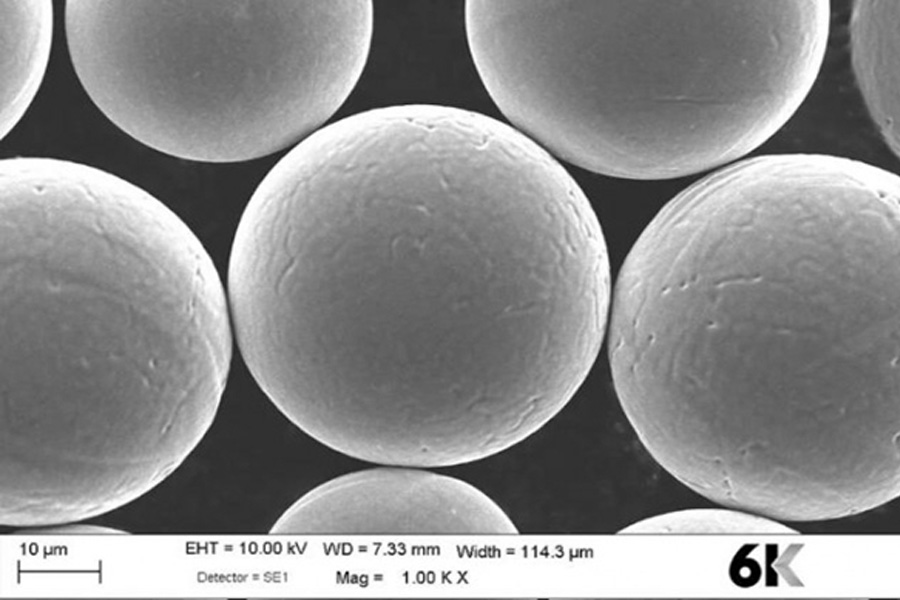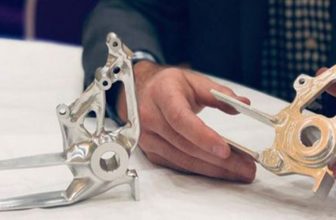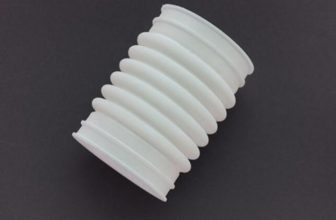
According to the latest research report from MarketsandMarkets, the global 3D printing metal market in 2019 is estimated at $774 million. The research company predicts that by 2024, the market size will exceed 3.1 billion U.S. dollars, and from 2019 to 2024, the average annual compound growth rate will be 32.5%. The reason for this growth is the growing demand for 3D printed metals in aerospace, defense, and automotive terminals.
Although the current additive manufacturing system suppliers still face technical limitations in the market and various challenges in entering mass production, it is gratifying that all aspects of metal 3D printing will make significant market progress in 2020. In this issue, 3D Science Valley and Guyou combine international and domestic development to jointly appreciate the current situation, challenges and next market pattern of metal 3D printing.
The Breaking and Standing of Metal 3D Printing
To understand the current status and next development of metal 3D printing, we need to first understand the feasibility requirements of metal additive manufacturing in production?
- -Must be predictable: You cannot spend hours or days to make the first qualified part through trial and error.
- -Must be faster: Priority is given to reducing build time, which is why multi-laser 3D printing equipment is increasingly used in production.
- -Must be accurate: At higher speeds and more complex parts, better process control is required to consistently produce high-quality parts while reducing post-processing or rework.
- -Must be stable: In a production environment, lasers are almost always on to provide the necessary flux. These lasers need to be reliable and easy to repair.
Quality control and assurance
Quality monitoring and assurance in the metal 3D printing process must be the focus of solution providers. Detection of surface defects and porosity is critical to the quality of parts. A key factor affecting the growth of metal 3D printing is quality assurance: metal additive manufacturing (AM) 3D printing equipment must be able to consistently produce high-quality repeatable parts. In this regard, Velo3D believes that whoever can do this for mission-critical components will win.
In terms of quality control, the industry calls for powerful software. Sigma Labs has always hoped to standardize the quality control of metal 3D printing from the perspective of changes in metal properties. In the end, it will not only benefit small businesses, but the entire 3D printing industry.
Metal 3D printing is in the process of spreading powder layer by layer because there are more than 50 different factors that play a role in the melting process, such as material size and shape errors, voids in the molten layer, high residual stress of the final part, and Material properties-insufficient research on the relationship between various variables such as hardness and strength has led to the difficulty of quantitative control of the 3D printing process, which greatly restricts the application range of metal 3D printing technology. “
The quality challenge is the “main obstacle” to the development of powder bed-based metal 3D printing technology. Sigma Labs’ PrintRite3D 5.1 technology that combines software and hardware will help metal 3D printing ultimately change the manufacturing landscape. Sigma Labs currently has six users-three 3D printing equipment manufacturers and three end users using its solutions, and it is expected to complete the testing and evaluation phase in early 2020. Sigma Labs’ technology provides real-time, layer-by-layer analysis to ensure compliance with production specifications.
According to market observations from 3D Science Valley, in addition to Sigma Labs, scientists from Aachen, Germany are studying new methods for monitoring metal 3D printing to improve the robustness of the process. When structural sensors are used in the build platform, critical errors will be detected in the future, such as the time when the supporting structure is torn. In addition, ultrasonic sensors can be used to analyze airborne sound to determine the quality of components. The research of laser-based ultrasonic measurement will go further in the future: pulsed laser will induce structure-borne noise in the component, which will then be detected by the laser vibrometer. This allows the discovery of tiny pores during the build process so that immediate intervention can be made. The in-situ measurement process can rework the problem area through another exposure sequence.
Technological breakthrough and re-establishment
According to MarketsandMarkets forecasts, PBF powder bed selective area metal melting 3D printing is expected to become the largest part of the 3D printing metal market. MarketsandMarkets also predicts that in the next four years, 3D printing of titanium alloys will account for the largest share of 3D printed metals.
Of course, there is still much room for improvement at the technical level. Although significant progress has been made in materials and processing technology in recent years, more improvements are still needed. The market is looking forward to adding more non-welding materials, such as Stellite 6 and Inconel738; LPBF (Powder Bed Selective Laser Melting) process requires more progress in surface finish, deformation control and post-processing costs; electron beam melting (EBM) technology Processing accuracy needs to be further improved; Directed Energy Deposition (DED) 3D printing technology also needs to be applied to larger parts without bending; Binder Jet binder jet metal 3D printing technology also needs to better control shrinkage .
In terms of LPBF (Powder Bed Selective Laser Melting) process, according to Velo3D, with the combination of software and hardware, what the market needs to consider is to realize that the original impossibility is being broken, and certain 3D printing restrictions will need to be lifted. With tight integration between these design software and printing preparation software, the use of the .stl file format will continue to decline.
Another development direction of the LPBF (Powder Bed Selective Laser Melting) process is to improve such things as output and efficiency. The LPBF system will need to have a higher 3D printing speed and a larger manufacturing range to open up more possibilities for metal additive manufacturing. In addition, the ability to nest parts (that is, stacking parts on top of each other to increase build density) is essential to increase manufacturing speed and improve manufacturing efficiency, but this requires reasonable design of supporting structures and consideration of these factors in the design.
The current major bottleneck for 3D printing to enter the industrialization field is efficiency and cost. Up to 70% of the current 3D printing product price comes from equipment costs, and materials also account for 30% of the cost. In the traditional manufacturing process, the material cost does not exceed 3% of the product cost. In terms of efficiency improvement, market demand is calling for a breakthrough in the nature of a leap in processing efficiency.
Metal 3D printing is breaking through its original borders. Internationally, according to market observations from 3D Science Valley, the future AM project of Fraunhofer in Germany is advancing 3D printing into a more stable and economically feasible way in a comprehensive way. Processing technology, driven by the technology giant Fraunhofer, Fraunhofer ILT in Aachen has developed a new processing solution for LPBF (metal melting 3D printing technology based on powder bed), which can also produce more than traditional LPBF systems Large metal parts with ten times faster processing speed. The LPBF system provides a very large, effectively usable build volume (1000 mm x 800 mm x 500 mm).
Software helps refresh the competitive landscape
Industry integration is inevitable. Only by clearly expressing the value proposition and corresponding clear market positioning to the market can these companies succeed. In the metal 3D printing market, a compelling value proposition will be to overcome the challenges surrounding cost, material flexibility and manufacturing constraints. Eventually, we will see more integration in the metal 3D printing industry, but now this is a game to wait and see.
Taking Velo 3D as an example, it is not difficult to see that most of the international companies have established a clear market positioning at the beginning of their establishment, including those based on equipment stability, including development and improvement of processing efficiency, and up-and-coming stars such as VELO3D, in the 3D Science Valley. It seems that being unsupported is just a word for VELO3D to communicate with users. VELO3D’s market positioning is quite clear: design freedom, agile production and quality assurance are VELO3D’s unique market positioning through technology.
Differentiation will be the key to the company’s survival. According to the market observation of 3D Science Valley, the LPBF (Powder Bed Selective Laser Melting) market is currently crowded with too many companies with no distinctive features. Almost all companies are proving that they can reduce costs and improve quality, and achieve consistent results. All efforts are making minor adjustments, the difference is not big, some of these companies will start to run out of funds in 2020.
Recycling metals
With regard to the development of metal powders, companies such as 6K (formerly known as Amastan Technologies) are developing new advanced materials for additive manufacturing. 6K’s UniMelt microwave plasma manufacturing technology uses recycled metal scrap to produce metal powder for AM additive manufacturing. The 6K process mainly converts certified metal scrap from milling, turning and other sources of recycled raw materials into high-quality metal powders that can be used in AM additive manufacturing.
6K’s alloy recovery technology can recover metals and alloys from subtractive manufacturing and other processing technologies. 6K is already recycling aluminum and titanium alloys for the aerospace, medical, and automotive industries. 6K claims that it can provide different powder sizes for the required AM additive manufacturing process: MIM (metal injection molding), LPBF, EBM, DED or binder injection, etc.
Stainless steel
In terms of stainless steel, one of the most significant advancements in the world is the identification of metal powder materials by GKN. In the IDAM joint project members, RWTH Aachen University Digital Manufacturing DAP Institute, Fraunhofer ILT Fraunhofer Institute for Laser Technology, and Technical University of Munich The joint efforts of the Institute of Metal Forming and Casting, GKN Powder Metallurgy, and BMW Group have proved the great potential of DP 600 duplex steel for industrialization in the automotive market. This is a dual-phase steel, and its mechanical properties can be adjusted by heat treatment.
The DP 600 dual-phase steel gas atomized material has been verified on the EOS M300-4 system. Its elongation rate reaches 13% (as it is), reaches 22% (after heat treatment), and its tensile strength reaches 700 MPA (after heat treatment). ). These characteristics make dual-phase steel materials an ideal choice for structural applications in the automotive and other industrial markets. And by using water atomized powder for future applications, parts costs can be further reduced.
Copper
Powder bed fusion (PBF) additive manufacturing technology makes it possible to manufacture a new generation of compact and efficient heat exchangers. If metal 3D printing technology is combined with copper with excellent thermal conductivity, it will be an improvement in electric vehicle heat exchanger technology. Bring huge room for imagination.
Pure copper has excellent thermal conductivity and is an excellent material for manufacturing heat dissipation components. The application of copper alloy 3D printing technology has been developed in the field of rocket engine manufacturing. In addition, its applications cover a wide range of fields from electric vehicle stator windings, copper coils, microelectronics products to injection mold inserts. Metal 3D printing technology based on the powder bed melting process can realize complex designs and release design freedom. The application of this technology in heat exchanger manufacturing enables designers to use advanced design strategies, such as the use of gradients and variable density. The lattice structure increases the surface area of the heat exchanger in a limited space and improves the heat exchange performance. In short, the design for additive manufacturing can realize the use of higher-density structural materials in locations with high thermal loads, thereby achieving a balance between lightweight and cooling performance.
Aluminum alloy
In the aerospace field, the application of aluminum alloy has always had some drawbacks. Although aluminum alloys are very light, they tend to perform poorly in applications exposed to temperatures above 160°C. They soften and age over time, so the aerospace industry chooses relatively heavy metals, such as steel or titanium. How to improve the performance of aluminum alloy, this is a place worthy of research and breakthrough.
For more than half a century, researchers have done a lot of work to improve the heat resistance of aluminum alloys, so that aluminum alloys can withstand higher working temperatures without reducing mechanical properties. Today, worldwide, through 3D printing technology, new aluminum alloy materials are showing a rapid development trend, higher strength, and the possibility of replacing medium temperature titanium alloys. In this regard, Shanghai Jiaotong University and Anhui Xiangbang The ceramic aluminum powder jointly developed and produced by composite materials can improve the fluidity of the powder, increase the laser absorption rate, and refine the grain structure, which is especially suitable for 3D printing.
In terms of special aluminum alloy materials for high-strength and high-toughness additive manufacturing, Australia Amaero developed HOT Al, Suzhou Beifeng developed Al250C, British Aeromet developed A20X, and U.S. HRL developed 7A77.60L. New high-strength aluminum alloys were developed and commercialized. Equipment suitable for 3D printing of various aluminum alloys has become an obvious international and domestic development trend.
Domestic industrialization trend
Domestically, in terms of the industrialization prospect of metal 3D printing into mass production, Anshi Asia-Pacific Additive Manufacturing and Shenzhen Yidong Aviation Technology Co., Ltd. successfully developed two domestically pioneered miniature turbojet engines that are all manufactured by 3D printing, 10kg class Thrust NK-10 and 50kg thrust NK-50. In 2018, the over-temperature test above 1200℃ has been completed, and all indicators meet the design requirements. The maximum speed in the test is higher than 140,000 rpm, which is a high-temperature ignition for a full 3D printed rotating turbine. experiment.
The first domestic miniature turbojet engine that is fully 3D printed
The NK10 and NK50 miniature turbojet engines incorporate the concept of additive design in the structural design of many key components, reducing the number of engine parts, reducing the overall weight of the engine, increasing the strength of some structural parts, and achieving lower The goal of cost, better performance, and longer life is an advanced power unit that meets the propulsion power of advanced low-cost micro-small air weapon systems, hybrid power of vehicles and ships, and power requirements of extended range. All parts of NK10 and NK50 micro turbojet engines are manufactured by Dedi’s new generation of selective laser melting 3D printing equipment DLM-280, which is a subsidiary of Nexperia Asia-Pacific Additive Manufacturing. Nexperia Asia-Pacific additive manufacturing has been developed based on forward design.
The NK10 and NK50 miniature turbojet engines incorporate the concept of additive design in the structural design of many key components, reducing the number of engine parts, reducing the overall weight of the engine, increasing the strength of some structural parts, and achieving lower The goal of cost, better performance, and longer life is an advanced power unit that meets the propulsion power of advanced low-cost micro-small air weapon systems, hybrid power of vehicles and ships, and power requirements of extended range. All parts of the NK10 and NK50 micro turbojet engines are manufactured by Dedi’s new generation of selective laser melting 3D printing equipment DLM-280, which is a subsidiary of Nexperia Asia Pacific Additive Manufacturing. Nexperia Asia Pacific Additive Manufacturing has developed around the development based on forward design. Market positioning, launched a series of single-structure and mixed-structure metal 3D printing equipment, and through continuous update and iteration, optimization from multiple dimensions such as accuracy, efficiency, molding size, control system, software, etc., enables it to better meet User needs.
According to market research conducted by 3D Science Valley, AVIC Commercial Aviation Engine has developed hollow fan blades. The hollow fan blade includes a hollow blade body, and at least one tree-shaped rib is arranged in the hollow area along the radial direction. AVIC Commercial Aviation Engine Co., Ltd. is able to apply tree-shaped ribs in the hollow area of the blade body, which can be applied to the lower chord length of the blades with small middle and lower chords and high stress during operation. The feature of large deformation, therefore, by providing tree-shaped ribs, the hollow rate of the blade can be further improved, and the impact resistance can be ensured. The hollow fan blades are made of metal materials and processed by 3D printing-additive manufacturing processes.
The domestic 3D printing technology in the aerospace field is moving towards more applications in subdivisions. On August 17, 2019, the Qiancheng-1 small satellite Suijielong-1 was developed by the Mechanical System Division of the General Department of the Fifth Academy of China Aerospace. The Yaoyi rocket was sent into a predetermined orbit, and the whole star structure of Qiancheng-1 was designed using a lightweight three-dimensional lattice structure design method for additive manufacturing, and the whole star structure was integratedly prepared by aluminum alloy additive manufacturing technology. The weight of the traditional micro-satellite structure accounts for about 20%, and the frequency of the entire satellite is generally about 70 Hz. The weight of the entire satellite structure of the Qiancheng-1 microsatellite has been reduced to less than 15%, the entire satellite frequency has been increased to 110 Hz, the number of entire satellite structure components has been reduced to 5, and the design and preparation cycle has been shortened to one month. The size of the entire satellite structure exceeds the envelope size of 500mm×500mm×500mm, which is currently the largest integrated satellite structure for additive manufacturing. The entire satellite’s additive manufacturing work was entrusted to Xi’an Bright Additive Technology Co., Ltd., and all structures of the satellite were printed and manufactured in one furnace by Bright’s four-beam 3D printing equipment BLT-S600.
The domestic manufacture of micro-nano satellites through 3D printing has also made commercial progress. Xingzhong Space Technology Co., Ltd. has obtained the optimization of the design of the 3D printed cube star deployer compared to the traditional processing deployer. In 2020 On May 5th, COSPOD-3D, the world’s first metal 3D printing-based deployer independently developed by Xingzhong Space, was successfully launched on board my country’s new-generation spacecraft test ship. After flying in orbit for 3 days, it returned to the ground with the manned spacecraft test ship on May 8. The mission was a complete success, which verified the function, structural strength and practicability of the CubeSat deployer.
Domestically established aviation In 2015, it began to use additive manufacturing technology to develop and manufacture aviation engine combustion chamber parts. The research contents of additive manufacturing for the establishment of aviation include: product design using 3D printing, the influence of materials, equipment and process parameters on products, organization, performance, and accuracy, and the influence of post-processing on internal stress, defects, accuracy, and performance, SLM+CNC process The impact of part integration. In terms of additive manufacturing applications, the research and development of combustor nozzles, combustor swirlers, combustor flame tubes, motor housings and other components have been carried out. Regarding the industrialization prospect of metal 3D printing entering mass production, the establishment of aerospace is advancing the mass production of engine motor housings.
In other respects, domestic aerospace companies such as Zero One Space, Deep Blue Aerospace, and Interstellar Glory have made continuous breakthroughs in the application of 3D printing. Take Interstellar Glory as an example, through 3D printing, the integrated printing and molding of the rocket engine’s assembly structure is realized. The body protects several runners. The assembly structure replaces traditional pipeline parts with internally formed runners, which reduces The number of parts on the final assembly structure saves the steps of pipeline assembly and the cost of pipeline purchase, and realizes the reduction of the assembly difficulty and cost of the final assembly structure.





